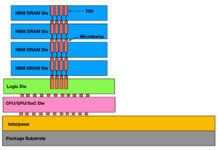SPONSORED FEATURE: Pure Storage’s Evergreen subscription services, aimed at making on-premises storage service consumption as much like the public cloud as feasible has been proven across eight hardware generations and over 30,000 controller upgrades for customers.
There is a fair amount of flattering me-too imitation occurring in the storage industry but the Evergreen services portfolio retain their superiority with the latest advances concerning power and rack space customer cost payments.
We can better understand how Pure has led the industry in Storage-as-a-Service (STaaS) terms by taking a look at the origins of the program, rooted in array architectural choices, and then seeing how it has developed.

Image source: Pure Storage
Pure Storage first introduced its Forever Flash architecture and services in 2014 as a response to problems afflicting storage arrays at the time; disruptive hardware and software upgrades, forklift replacements when storage controllers needed changing, and such technology refreshes repeating every three to five years. The Evergreen concept was to make these problems disappear by designing the hardware and software to support non-disruptive upgrades and then to enable the reliable provision of storage as a service, following the example of the top public cloud providers, with array state monitoring, metering and management.
The hardware innovation was to continue to use a dual-controller architecture but with a significant difference. The traditional active-active design involved both controllers sharing the array’s workload. But they were configured to only operate at 50 percent capacity in terms of CPU performance and memory occupancy. If one of the controllers failed then the other could failover use that spare capacity to take in the entire array’s workload with no disruption of service to the array’s application users.
However, the disadvantage of this was that when a controller upgrade is needed the entire controller chassis has to be pulled out with the array going offline. Pure’s Prakash Darji, General Manager, Digital Experience, explains: “In the original design of our FlashArray, going back now 14 years, we didn’t do that. We decided to do an active-passive controller setup, where you’re using 100 percent of one, and 0 percent of the other.” The second controller “is just a hot standby. It’s completely idle and there’s no state in the controller.”

That means that, if the first controller is pulled out for replacement, the second one fails over and there is no disruption of array service whatsoever. When the replacement controller is switched on and ready then the second one is extracted, operations fail over to the new controller, again with no service interruption, and the second one is then replaced. It’s all transparent to the applications and customers using the array.
Darji said: “That design of the hardware and the software of not managing state and an active-passive controller architecture was designed with Evergreen in mind, because evergreen means non-disruptive. It means in place, everything is in place.”
Extending the usable life of storage arrays
With these hardware and software underpinnings in place the Forever Flash program was launched in 2014 and it extended the usable life of all Pure Storage FlashArrays indefinitely, for both new and existing customers with current maintenance contracts. It was enabled by Pure’s arrays being modular, stateless, and having a software-defined architecture. The program featured flat maintenance pricing, software upgrades, a controller upgrade every three years, both included in the maintenance pricing, and an ongoing warranty for all components, including flash media.
The core principle was that customers could deploy storage once and seamlessly upgrade it in-place for multiple generations, avoiding disruptive “forklift” controller and storage chassis upgrades, and software and data migrations. The roots of the Evergreen program can clearly be seen here and it enabled a subscription model for on-premises storage, similar to the simplicity of cloud services where upgrades happen transparently in the background.
The very first Evergreen service was introduced in 2015, ten years ago, called Evergreen Gold and built on the existing Forever Flash program. It’s now called Evergreen//Forever.
The Evergreen//One option arrived in 2018 and, although it also related to on-premises storage, the array’s actual ownership was retained by Pure with customers paying – subscribing – for consumption of its services; paying for the storage they use, as with public cloud storage services. This changed the customer’s focus away from specific hardware. They paid for set levels of storage services, not for a specific array model or array configuration.
Customers can scale storage capacity up or down flexibly based on changing needs without over-provisioning. Pure delivers extra capacity to the array as needed if the customer’s workload increases its storage demands.
Satisfying performance and usage SLAs
It also featured non-disruptive upgrades and proactive monitoring, while satisfying performance and usage Service Level Agreements (SLAs). Currently there are ten such SLAs covering guarantee performance, buffer capacity, uptime availability, energy efficiency, cyber recovery, resilience, site relocation, zero planned downtime, zero data loss, and no data migration. An SLA could promise 99.5% uptime.
These SLAs are accompanied by Service Level Objectives (SLOs) which are internal goals that Pure needs to reach to meet the SLAs. Eg; 99.7% uptime. The arrays have on-board metering to provide metrics for these, Service Level Indicators (SLIs) with telemetry sending them to Pure so they can be tracked.
Darji explains: “An obligation is ‘we’re going to try’, and agreement is ‘we’re guaranteeing it’ with monetary remediation and no exclusions to the monetary remediation. No fine print.”
Pure customers can see their own SLIs in Pure1, Pure’s cloud-based data management and monitoring platform.
Darji says: “You actually can’t do Evergreen without Pure1.”
(There is more information about this in a Pure blog.)
Evolving the storage as-a-service proposition
A third Evergreen//Flex option was announced in 2022. It took the as-a-service idea a stage further by having customers own the array but only pay for the capacity they use. It provides a “fleet-level architecture” where performance and unused capacity can be dynamically allocated across the customer’s entire storage fleet as needed by applications and workloads.
In late 2023 Pure announced upgrades to its Evergreen//One and Evergreen//Flex portfolio members paying its customers’ power and rack unit space costs. Pure Storage will make a one-time, upfront payment to cover the power and rack space costs for customers subscribing to Evergreen//One or Evergreen//Flex. The payment can be made directly as cash or via service credits. It is based on fixed rates for kilowatt per hour (kWh) and Rack Unit (RU), proportional to the customer’s geographic location and contract size.
Power and rack space account for roughly 20 percent of the total cost of ownership (TCO) in the storage market.
By covering these costs, Pure eliminates a significant expenditure that still exists with on-premises STaaS deployments. For customers it deals with the problem of managing rising electricity costs and also rack space limitations, and it provides cost savings and aligns with long-term efficiency objectives for customers, helping them optimize resource and energy efficiency as per their sustainability and net-zero goals.
No other supplier does this. The Evergreen portfolio will continue to develop as Pure views its importance as the same as array hardware and software features. Darji says Pure wants to “stay focused on moving the industry forward to an outcome; that outcome being just predictability and performance and capacity in an ageless way.”
He says: ”If we could eliminate all labour required to run and operate storage that is due north for us. It’s like anything that takes work, minimise it, make it go away and be smart about that.” It’s this strand of thinking that is informing Pure’s Evergreen development roadmap. When we consider that some customers having more than a thousand Pure arrays distributed around their environment the opportunities for fleet management services look attractive.
Sponsored by Pure Storage.








